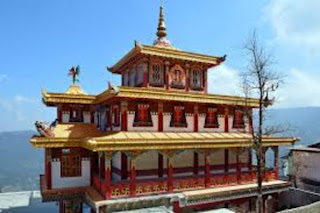The Mag-Dhog Yolmowa Buddhist Monastery,
nestled in the heart of Tibet, stands as a significant beacon of Tibetan
Buddhism. Its rich history, unique methodology, and diverse practices offer a
fascinating glimpse into the spiritual and cultural heritage of the region.
History
Founded in the 15th century during the reign
of the 5th Dalai Lama, the Mag-Dhog
Yolmowa Monastery was established by the
renowned Tibetan lama, Yolmowa. The monastery's origins are deeply intertwined
with the Gelug tradition, one of the major schools of Tibetan Buddhism. Over
the centuries, Mag-Dhog Yolmowa has been a center of learning and spiritual
practice, contributing significantly to the preservation and propagation of
Tibetan Buddhist teachings. Despite facing challenges during periods of
political upheaval, the monastery has remained a vital spiritual hub.
Methodology
The monastery adheres to traditional Tibetan
Buddhist methodologies, which encompass a blend of meditation, study, and
ritual practices. Central to its methodology is the study of Buddhist
scriptures, which are meticulously preserved and studied by monks. The
monastery places a strong emphasis on meditation techniques, including both
analytical and contemplative practices. Rituals, such as elaborate pujas and
ceremonies, play a crucial role in daily life, aiming to cultivate compassion
and wisdom among practitioners.
Additionally, the monastery is known for its
commitment to preserving ancient Tibetan texts and teachings. Scholars and
practitioners at Mag-Dhog Yolmowa engage in extensive scriptural analysis,
debate, and commentary, ensuring that the teachings remain vibrant and
relevant.
Types
Mag-Dhog Yolmowa Monastery encompasses
various types of Buddhist practices. These include monastic training for monks,
layperson teachings, and public rituals. The monastery also hosts specific
traditions related to Tibetan Buddhism, such as elaborate mandalas, thangka
paintings, and tantric rituals. Each practice is designed to deepen spiritual
understanding and enhance the practitioner's path toward enlightenment.
In essence, the Mag-Dhog
Yolmowa Buddhist Monastery represents a cornerstone
of Tibetan Buddhist culture, where history, methodology, and practice converge
to foster spiritual growth and preserve a rich religious tradition.

No comments:
Post a Comment